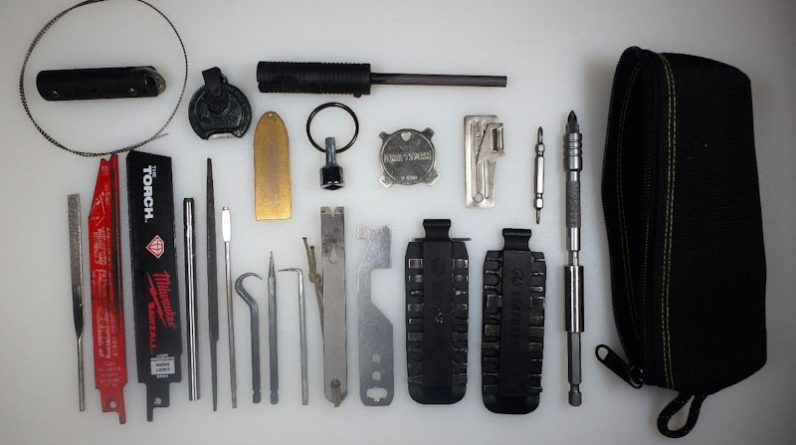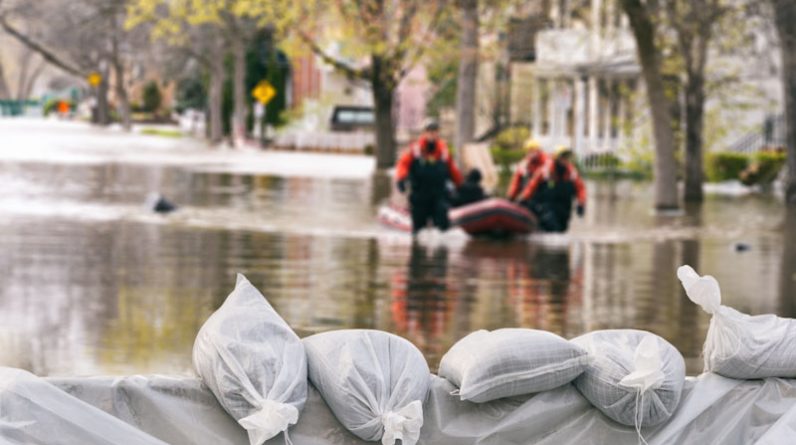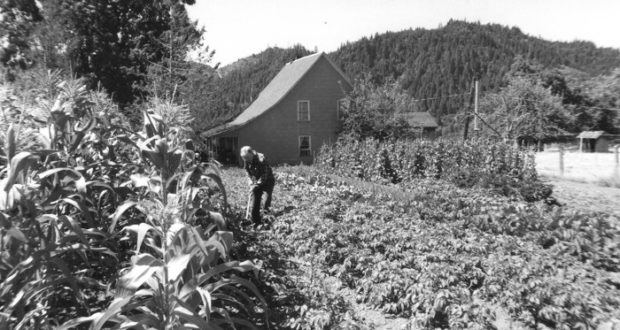Often, homesteading and survivalism can be defined by the simple fact that you have your own access to medical tools, energy, and food. However, having independent sources of useful solutions and chemicals can also be essential in difficult situations alongside everyday homesteading.
Much like most products, you don’t have to be limited to purchasing manufactured chemicals. You can produce alternatives to many common solutions that are not only effective but also often greener and more cost-effective. Let’s explore some of these alongside approaches to storing your concoctions safely.
Cleaning Products
Keeping clean is a necessity for any survival situation. Your efforts here help minimize the potential for the spread of bacteria and exposure to infection. Crafting your own cleaning products is not just good for when you’ve run out of commercial items. By making homemade items part of your day-to-day life, you can find you have greater control over the scent, strength, and eco-friendliness of your cleaning materials.
Soap
Making your own soap is a relatively simple process. Firstly, you can extract the base metal hydroxide — known as lye — by boiling hardwood ashes in soft water for 30 minutes. While this is less caustic than the chemical lye you buy from stores, it’s still important to wear protective gloves and goggles when handling it. You’ll then combine the lye with melted fat, such as coconut oil or lard. There needs to be around a 1:3 ratio of lye to fat. By heating the fat and lye gently and stirring every 15 minutes or so for up to 3 hours, you’ll have some serviceable soap. This is as good as either hand soap or dish soap. You can also add some essential oils during the stirring process to give it a more pleasant scent.
Toilet cleaner
An unclean toilet bowl is not just unpleasant to be around, but it can also be a breeding ground for harmful bacteria. Fortunately, toilet cleaner is not difficult to fashion and you can produce it in a range of strengths. A milder toilet bowl cleaner for daily use takes just a quarter cup of baking soda to a cup of distilled white vinegar, mixed thoroughly. However, for something stronger for a more thorough cleansing, you combine the vinegar and baking soda with tea tree essential oils. This is because tea tree oil is known to have antibacterial properties.
Water Purification
Whether you’re homesteading or responding to an emergency scenario, clean water is one of your most important resources. While people can survive for up to 3 weeks without food, they can only last around 3 days without water. Boiling and disinfectant tablets are often the preferred methods of purification. Nevertheless, you can also craft solutions that help to purify water from rivers or collect rain in a pinch.
Plant-based solutions
Some plants can be effective in removing contaminants from water. These include cilantro, banana peels, coconut, and the bark of Oregon grape plants, among others. In most cases, this involves keeping water in a bag with minced or shredded samples of these plants. You then filter and boil the water afterward. Yet, it’s important to do your research into how to effectively collect, store, and utilize each type of plant for this purpose, to avoid dangerous errors.
Homemade chlorine
Creating chlorine can also make a good tool for cleaning water for drinking, washing dishes, and cleaning food. The Centers for Disease Control (CDC) advises that this should only be done when safe bottled water isn’t available and boiling isn’t possible. It’s a last resort. Like other chemicals used in water purification — such as potassium permanganate — it should be used sparingly. Usually around 0.1ml of bleach to each quart of water is sufficient. You can make chlorine bleach at home using a cleaning agent known as calcium hypochlorite. Adding 1 teaspoon of these granules to 2 gallons of water and stirring provides you with a disinfectant that you can use in emergencies.
Pest Control
Unfortunately, there may well be times when pests invade your home and land. This might be in the form of seasonal mosquitos or ticks. You might even find that some pests will get into your homegrown crops. Crafting and storing some of your own pest control solutions can empower you to fend off these minute threats to your well-being and comfort.
Bug repellant
Bug bites can be uncomfortable. Not to mention that, in some instances, they can lead to the spread of disease. Thankfully, you can craft repellant that’s eco-friendly and kinder on your skin than many store-bought varieties. This begins with choosing an essential oil that repels insects. These include citronella, peppermint, and thyme. Some essential oils are particularly effective against specific insects, like sage for fending off ticks. You then mix your chosen oil gently with a base oil — coconut oil or almond oil are popular — and distilled water. Getting the ratios to your preference can take a little trial and error. However, when you have a solution that’s right for you, you can pour it into spray bottles and store these for when you need them most.
Hillbilly breath
Hillbilly breath is a natural insecticide that helps protect your crops and other plants. It’s a pretty agile solution, too, as it’s regarded as something of a catch-all against most bugs. The recipe for this concoction involves chopping garlic, tobacco, mint, and ash. You then mix these ingredients into water along with a tablespoon of your homemade soap. Allow this to steep for a day or so. You can then mix some in a watering can and sprinkle it on your plants to protect them against pests.
Fire Starters
Fire is vital for cooking and heating, particularly in survival scenarios where electrical sources aren’t available. Yes, there are natural methods for igniting a fire. However, keeping a collection of homemade fire starters on hand can save time and energy when you need to get a good blaze going quickly and with minimal effort.
Wine corks in alcohol
Wooden corks have absorbent and inflammable qualities that make them great fire starter materials. However, it’s important to gather the natural wooden kind rather than the plastic versions that are common today. Fill a mason jar or watertight tin with as many corks as you can fit, before filling the rest of the space with isopropyl alcohol. That said, in a pinch, almost any alcohol will do the trick. Once sealed, you can store these away until you need to take one or two out to use as fire starters in the future.
Lint in cardboard tubes
Most people know how important it is to clear out your clothes dryer’s lint compartment, as exposure to heat can make lint a fire hazard. This is also useful information when making homemade fire starters. You can combine a little petroleum jelly with the lint from your dryer, before rolling it into cylinders. From here, you simply stuff the combination into cardboard tubes from the inside of toilet paper or kitchen towels. Storing these in ziplock plastic bags keeps them safe for when you want to add one to your kindling as a fire starter.
Keeping Solutions Safe
Heading into your kitchen or garage to whip up a useful concoction can be interesting and practical. Nevertheless, it’s also vital to establish storage solutions for these and other chemicals in your home. After all, safety is always a priority in any survival or prepping scenario. The homemade nature of these chemicals doesn’t necessarily mean they don’t harbor risks. Taking steps to properly keep them contained can both safeguard your well-being and also ensure the items’ longevity.
Storing chemicals correctly begins with clearly identifying what you have in your collection. Get to know exactly what the makeup of each of your solutions is and the potential hazards they pose. This helps you to choose the most appropriate places and conditions for them. For instance, flammable chemicals — including your homemade fire starters — must be placed in cool areas out of direct sunlight and other potential sources of ignition. This might include a storage shed or garage away from the main part of your home. Corrosive chemicals should be stored away from other solutions, too. This is because there’s a risk of them leaking onto other solutions, affecting the integrity of the containers.
It’s also vital to keep your chemicals organized in the storage area. Given that you’ll be creating many of these from scratch, you should take the time to clearly label each. This is particularly important when you’re not the only one who might be interacting with them. Whoever uses them should be able to tell exactly what each solution is, how it should be used, and what its ingredients are. Another key element of organization is to avoid over-stacking containers. Ensuring that each has its own space on shelves and is not balanced on top of other bottles helps avoid accidents.
In addition, it can be wise to talk to your family about the importance of safe storage of these chemicals. By giving them a little guidance on the system of organization and why these measures are so important, you’re empowering them to keep themselves and others safe.
Conclusion
Crafting and storing your own essential solutions can be a fascinating process, alongside boosting your independence. There are also various other nuanced concoctions that homesteaders have used for centuries that are worth exploring. It’s vital in all circumstances to put your safety first when creating new solutions or handling chemicals, though. This includes utilizing appropriate protective equipment and being mindful of the potential for fumes when boiling solutions or combining chemicals. With a little preparation and care, you can create solutions that support your day-to-day life and help you thrive through an emergency.









